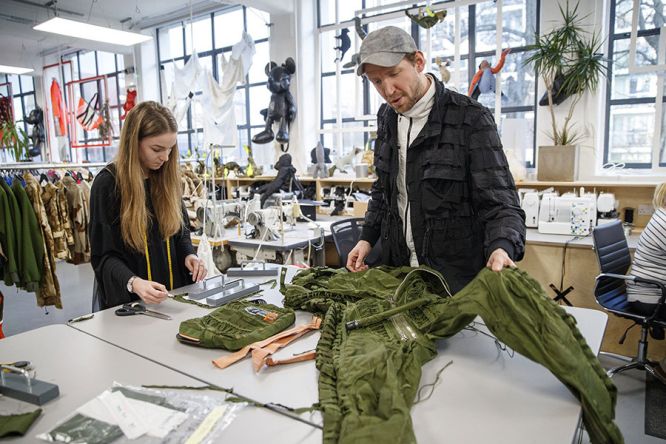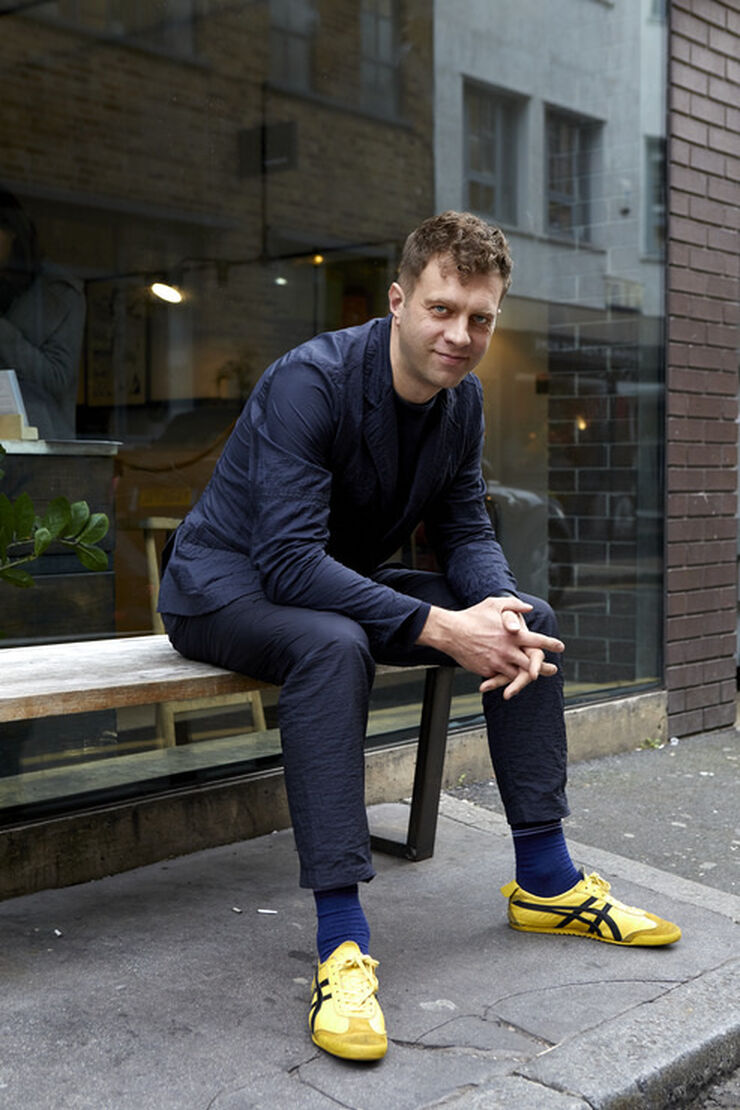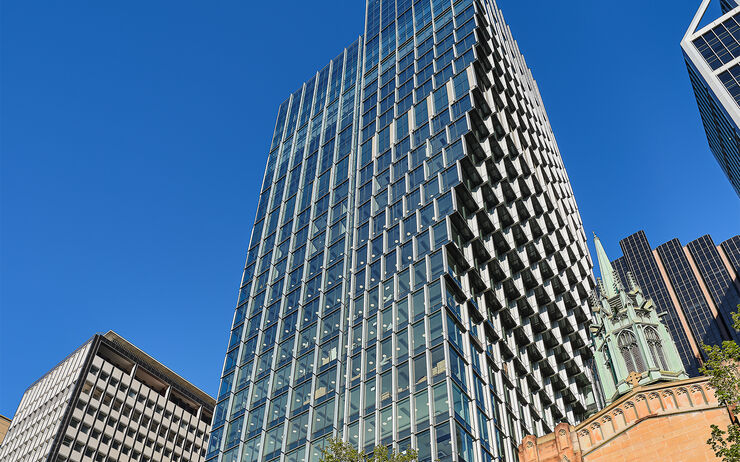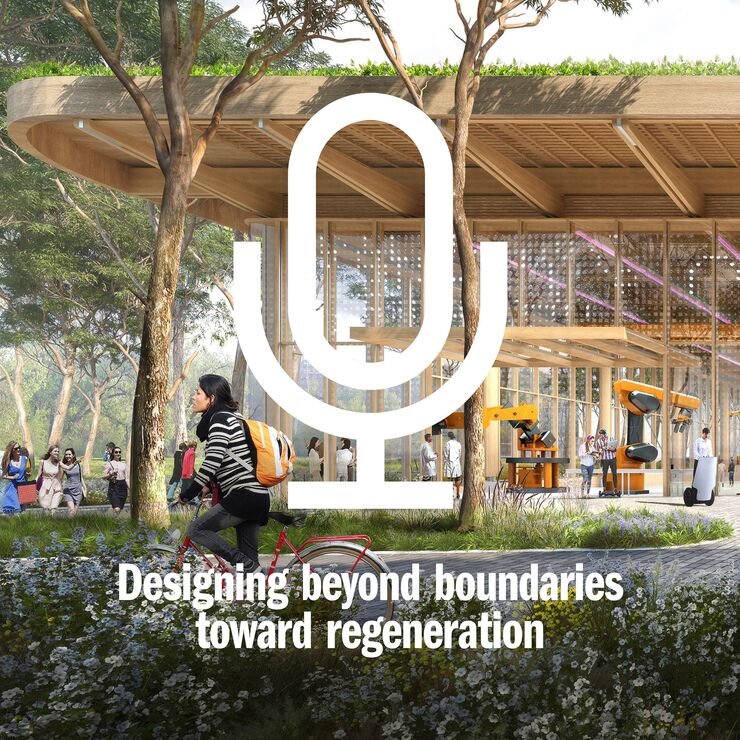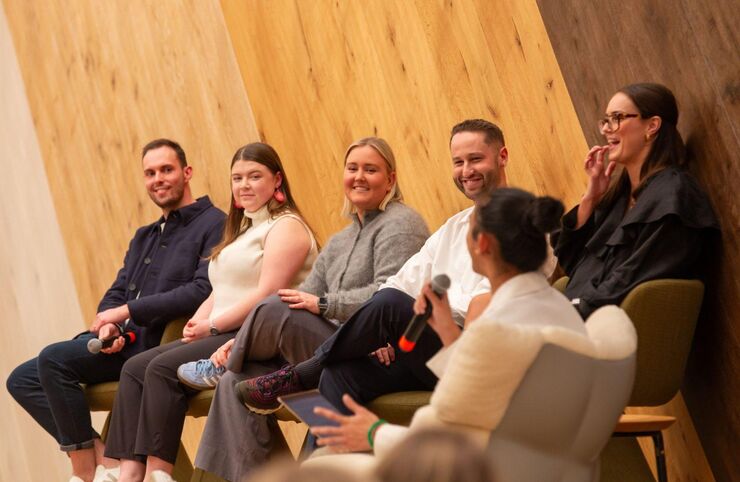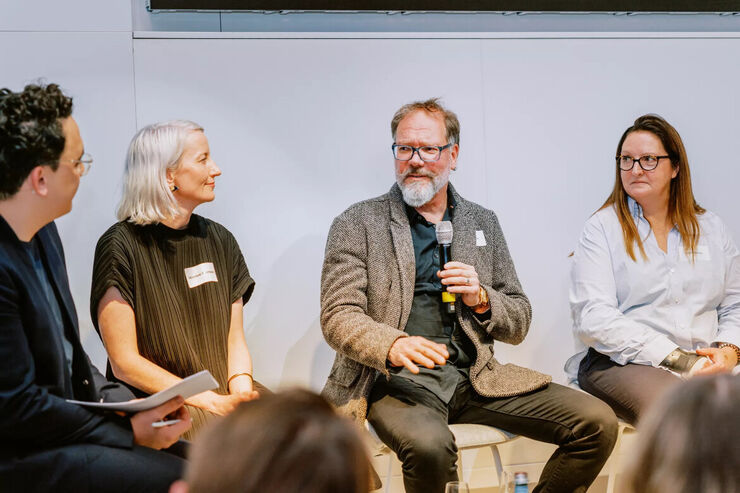Transcript
XAVIER DE KESTELIER:
Hi, I am Xavier De Kestelier. This is Hassell Talks a podcast series exploring the diverse perspectives, open minds, collaborations, and creative insights that we know will be the key to navigating the increasing complexities of our world. Today, I’m here with Christopher Raeburn who is a Founder of Raeburn, fashion label based in Hackney in London. And besides that, he’s also the Creative Director for Timberland. Hi Chris, how are you?
CHRISTOPHER RAEBURN:
Fantastic. So happy to be here and yeah, thank you for the invite. Looking forward to what I think will obviously be a very broad and hopefully very informative discussion.
XDK:
Fantastic. Now your label, Raeburn, is really quite different than any other fashion label I’ve come across. And you’ve got this quite amazing three words you always use, and it’s on quite a lot of your clothes, even on this one, this hoodie I have here, which says, “Remade, reused, recycled.” Can you elaborate on that to get us started?
CR:
Yeah, thank you. So, we’ve been running a small fashion label in East London, as you mentioned, for just over 11 years now. And the concept we started with was something a little bit different. I took one parachute, a military parachute canopy, and I then cut that thing up. I completely deconstructed it and I made it into eight garments. And I came up with the idea, “Remade in England.” So, not just made in England, but remade in England. And from there we’ve been able to then grow a company. We now have about 25 people. We have two retail stores here in London and work with stores around the world as well. But really it’s the remade aspects of what we do that really drives our philosophy. And we now make thousands of pieces from other items and they’re all remade in England. So, it’s everything from life rafts, to blankets, to, of course, the parachutes that I mentioned earlier, silk maps, tights. You name it, we’ll take it apart and make it into something else. But if we only did that, we’d be a very, very niche company. So, we then introduced two further parts to our line, the reduced and recycled aspects. And reduced really focuses on waste reduction, local manufacturing. And then recycled is allowing us to take steps towards completely closed loop garments. So, recycled primarily from PET plastics. So, all of those plastic bottles we’re diligently recycling, they can be chipped, made into pellets, made into fibre, and then we make them into material that we then make into garments. So, we call it, “Remade, reduced, or recycled.”
XDK:
Which is very different than what people see happening now with fast fashion, right? And that has been driving the fashion industry for the last … I don’t know, 10 years or something like that. Do you see that coming to an end soon? Do you see … what are the drivers for that? How can that really be changed?
CR:
When having this discussion, I think it’s also important to counter it with the fact that people do need affordable clothing. So, at Raeburn, we’re not for a minute saying that everything we’re doing is the right answer or indeed applicable to all. But we do think that in general, people need less stuff but they need better stuff. The very nature of fashion is driving needs. Everyone wants something new. Those companies and brands in involved in that current process and that current system within fast fashion, they’re part of the solution as well, actually. I think it’s so important we work through this together. First, we acknowledge that there is a problem and that we do need to make some changes. And perhaps this moment now within COVID-19 is exactly the moment where we take that obligation to make those positive changes.
XDK:
Because architecture normally takes much longer. But we don’t have seasons for example, right? We don’t have a winter or summer in architecture. A building takes a long, long time to design and it takes a long time to build. One line I think that is a bigger analogy is when you start looking at fit-outs of buildings, the interior. Office fit-outs get done by companies and quite often they will only last maybe five years and then every everything get chucked, quite often.
CR:
But I think what’s interesting in this conversation is that both industries, we need to go upstream a lot more than we do. We need to consider materials first. And particularly in fashion, you have a giant problem at the moment, that the majority of affordable clothing tends to be blended materials. So, I’ll be a polyester with a cotton. And currently the extruding process to bring those two materials apart, is very, very experimental. There are some steps being made, but nothing on the scale. So, all of a sudden you’ve got millions, billions of garments being made that actually no one can then take apart.
And I think a big part of what we need to do within … I say, of course, within the fashion industry, but I would also say cross industry, is just considered materials to begin with and potentially where we can be a lot more sharing and a lot more clear with what we’re starting with to begin with. And then what’s manufactured, whether it be a beautiful office chair, or it be a puffer jacket actually that maybe comes from the same source. And then if it you need to think, well, okay, once that item’s been manufactured and then worn, hopefully for five years, 10 years, 15 years, or in your example, five years within an office environment, it can then still come back to the same place to be recycled and reused again.
And then it’s about getting co-creation and cross industry cooperation. And then I think it really starts to become very tangible. And I think in order to do this, it needs such a cross industry, but then also cross potentially governments, etc., thought around what the future of materials are and what countries places are. What do they want to be doing going into the future? Would, for example, the UK want to be a recycling hub for a certain type of material? And then by default the manufacturing hub for that same material? I certainly feel within the fashion industry, there’s not nearly enough work happening considering upstream and then downstream and essentially looking to close the loop.
XDK:
Everybody had this kind of a good will to wanting to change, and often it’s … what I found out, people sometimes don’t know how to. Like Hassell has signed up to Architects Declare, which kind of is a declaration and a commitment that by 2050 actually we’ll operate completely carbon free in all the buildings that we design and the operation of these buildings. And the construction of these buildings should be carbon footprint free. But that’s huge. We actually don’t know how to do it yet. And I think it’s that knowledge, that how do we get that knowledge? How do we need to kind of upskill ourselves and what you just said about young designers coming now with a certain set of knowledge. Being knowledgeable and learning continuously about it is so important at all levels. Because otherwise we don’t have the tools on how to do it.
CR:
I think the first thing in all of this as well, it’s about transparency and about accepting the fact that nobody has a map for this. This is all new in whatever industry. So, there’s no defined route at all. But I do think there’s a big thing that people do tend to get stuck with. They want to do the right thing, but they don’t quite know how. You just need to put actions in place and a level of accountability. And when I think about with Raeburn, we used Earth Day, so April 22, to actually … we took that day up almost as a digital away day in the heightened COVID-19, to then really plan about what we were going to do as a business, and then importantly put actions in place and accountability and say that we’ll report publicly, quarterly of what we’ve been doing, what mistakes we’ve made, what’s gone well, etc., And then move things forward together. And what we’re looking at within Raeburn is around some very global initiatives. So, B-Corp registration, which is a big one that we’d like to work towards. But then also 1% for the planet. Those sorts of things I think are kind of universal and we can then all, I think, get behind. So, I do think that there are some cross industry initiatives that we can work towards along with, as you say, the things like sort of carbon neutrality and travel, etc., all of those things that I think almost now they need to be just standard. And then what can we do over and above that?
For me, I like the fact that we should in the right way, challenge each other. And when you mentioned earlier about between us, fashion and architecture make up 50% of the carbon emissions and the pollutants, etc., that’s a really bad competition to be involved in. And it’s not like either of us should be proud of that, but if that all of a sudden turns around and can become truly positive, then wow. It’s a real game changer.
XDK:
What we see in architecture as becoming really important is, I think technology is starting to help us a lot along the way. In architecture, we use a lot of kind of digital tools and where we are able to, in the design process, start to understand how our buildings will behave and how they can be more sustainable. We can calculate before we build a building, how much it will heat up by the sun, how much insulation, how well the insulation works. All these things, we start to actually model and simulate before we really do the real thing and build the building. I was wondering, is technology playing a big role in that in fashion as well? Or is it in different ways?
CR:
Simple answer is I think it wants to. And I think that the fact the industry wants to implement sort of innovation, in particular, digital innovation … I think there’s still more work to do around how to make it, let’s say, more accessible and more understandable. So, what we do as a fashion industry, particularly around sampling, I think really needs to be questioned. Because every season and that means sometimes twice per year, could even be four or six or eight or 10 times per year, we make a physical sample of something, so a dress or a backpack or a pair of shoes. And then that will go to a showroom or a sales person. And they’ll then take that to different stores and then hopefully you’ll get wholesale orders from that. And when you extrapolate that, all of a sudden it’s then potentially a lot of salespeople around the world, all needing that physical sample. And then all of a sudden, it’s tens of thousands of samples and sometimes millions of things that actually, potentially, we need to kind of question whether they need to be made at all. Because if you have a digital version, you’re then already in a position where that can be shared easier. And potentially you can do that work a lot quicker. And particularly if it’s a new colorway or a new pattern, that’s I think something that could really help.
And then when you start to think about how that extrapolates into physical retail stores, then it’s a really exciting conversation. It potentially even crosses over between our two industries, because what we do at the moment is frankly absurd. We make millions of things, physical things, and we ship them all over the world. And then we take them to, of course, depots that then go into individual stores. And we assume that all of a sudden, when Xavier walks into the store on a Saturday afternoon to buy a new coat, we’ve got his exact size in the exact colour with all the detail that Xavier wants. And the levels of risk there are obviously magnified at every point. Whereas actually the jacket that Xavier wants, he’s actually signed off digitally that he’s happy with that and we’re then in a position where we can make it so that we’re sure it fits you. We’re a long way off that, but that’s an exciting proposal.
XDK:
So, Chris, thank you so much again for your time, because I know you’re a very busy man. You have quite a few hats to wear as Founder of Raeburn and Creative Director at Timberland.
CR:
Pleasure.
XDK:
Fantastic to talk. Fantastic to kind of see our both industries who might seem completely different, I think we’re striving towards the same goal, which is so fantastic. And I hope we’re going to be collaborating more in the future on all sorts of interesting projects. I am Xavier De Kestelier. You have been listening to an episode of Hassell Talks recorded in London. If you enjoyed this conversation and would like to hear more, please subscribe and check out our other episodes. Thanks for listening.

